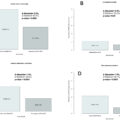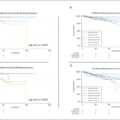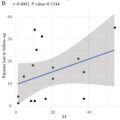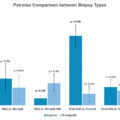Abstract
Background
For patients with metastatic bladder cancer (mBC) palliative chemotherapy is one of the main treatment options. Real-world insights into outcomes are available, but a comprehensive overview of specific treatment details like number of chemotherapy cycles received and (reasons for) adjustments is lacking.
Methods
A population-based study was conducted, including all patients diagnosed with mBC in the Netherlands between 2016 and 2021 who started chemotherapy as initial treatment. Data on patient, tumor, and treatment characteristics, including number of cycles, adjustments and reasons for adjustments, and survival were collected from the Netherlands Cancer Registry. Treatment patterns and outcomes were analyzed descriptively. Logistic regression analysis was used to identify factors associated with receiving the full guideline-recommended treatment (4–6 cycles).
Results
A total of 684 patients started first-line chemotherapy, mostly carboplatin-based (54%). Of these patients, 35% did not receive the full course of treatment. Among these patients who received <4 cycles, 24% died within one month of stopping treatment. Male sex and good performance status were independently associated with receiving the full course of treatment. Among patients who did receive a full course of treatment, half still had adjustments to their treatment schedule, which mainly included dose reductions due to side effects.
Conclusions
Among patients with mBC starting first-line chemotherapy, only a small majority received the recommended number of cycles, and treatment adjustments were common. This suggests that adhering to recommended treatment is challenging, emphasizing the importance of integrating insights on treatment discontinuation and modifications into the shared decision-making process and guideline development.
1
Introduction
The survival of patients with metastatic bladder cancer (mBC) remains poor with no distinct improvement over the past decades [ , ]. Treatment of mBC is primarily aimed at prolonging survival, and the administration of platinum-based chemotherapy, specifically cisplatin or carboplatin, is one of the main treatment options for these patients [ ].
The decision to start systemic treatment involves trade-offs between quantity and quality of life. Therefore, a shared decision-making process in which the patient, relatives and physician discuss the benefits and risks of a systemic treatment is of utmost importance. Evidence concerning the efficacy of systemic treatment mainly stems from randomized clinical trials, which generally include patients with a more favorable prognostic profile, better performance status and less comorbidities compared to the general patient population [ , ]. As a result, the risks and benefits of treatment may be different for patients in daily clinical practice, which complicates accurately informing patients about the expected risks and benefits of palliative systemic treatment.
Because of this, data on treatment patterns and outcomes in real-world populations of patients with mBC are of added value. Real-world studies showed that the majority of patients with mBC do not start palliative systemic treatment and that there is a disproportionally higher use of carboplatin based chemotherapy in the first line [ ]. The observed median survival of patients who received cisplatin-based or carboplatin-based chemotherapy was shown to be 12.9 and 11.1 months, respectively, compared to 2.5 months in patients who did not receive systemic treatment [ ]. Although these results contribute to a better understanding of the outcomes of systemic treatment in the real-world patient population, more detailed information on the number of treatment cycles patients with mBC complete in daily clinical practice is lacking, as well as information on what adjustments are made to treatment schedules, and why these adjustments are made. Discontinuation of systemic treatment or adjustments in treatment schedules probably result in suboptimal survival and quality of life outcomes. It can also evoke feelings of disappointment and failure in patients, as they are likely to have high expectations of the treatment [ , ]. In addition, discontinuation of chemotherapy shortly before death is considered an indicator of potentially inappropriate end-of-life care [ ], which has been shown to be associated with a reduced quality of life of patients and their relatives [ ].
To support patients and their treating physicians in making shared decisions about treatments that align with a patient’s wishes and needs, real-world insights into treatment patterns and alterations are important. Therefore, the aim of this study was to provide population-based insights into first-line systemic treatment patterns for mBC, including the number of cycles received, adjustments made to treatment schedules, the reasons for these adjustments, and the proportion of patients who died shortly after stopping chemotherapy. In addition, we sought to identify factors associated with receiving the full number of guideline-recommended treatment cycles.
2
Materials and methods
2.1
Study population
All patients aged 18 years or older who were diagnosed with synchronous mBC between 2016 and 2021 and started chemotherapy as initial treatment were selected from the Netherlands Cancer Registry (NCR). The NCR is a population-based cancer registry hosted by the Netherlands Comprehensive Cancer Organisation (IKNL) that contains information on the diagnosis and treatment of all newly diagnosed malignancies in the Netherlands. Patients treated with chemotherapy in combination with radical cystectomy were excluded. Patient, tumor and treatment information as available through the NCR was complemented with more detailed data concerning treatment and follow-up, which was collected as part of ProBCI (Prospective Bladder Cancer Infrastructure) [ ]. The study was approved by the Privacy Review Board of the NCR (reference number K23.199) and the ProBCI Steering Committee.
2.2
Data and definitions
Data used in this study included patient and tumor characteristics (age, sex, comorbidities, performance status, renal function, number and localization of metastases), first-line systemic treatment data (type of treatment, start and stop dates, number of cycles, type of adjustments, main reason for adjustments), and vital status.
Comorbidities were grouped into 0, 1, ≥2 or unknown according to the number of categories of the Charlson comorbidity index [ ]. Performance status was grouped into ECOG 0, ECOG 1, ECOG ≥2 or unknown. If performance status was documented as Karnofsky Performance Score, it was converted to ECOG (KPS 100 to ECOG 0, KPS 80–90 to ECOG 1, KPS 10–70 to ECOG ≥2). Renal function was measured in mL/min/1.73m2 and grouped into 0–30, 30–60, 60-90, >90 or unknown. The number of metastatic sites was defined as the number of metastases at different sites (e.g., bone metastases and liver metastases count as 2 sites, but two bone metastases count as 1 site).
Type of first-line chemotherapy was grouped into cisplatin-based chemotherapy, carboplatin-based chemotherapy or other. For patients who started cisplatin-based chemotherapy and switched to carboplatin-based chemotherapy (e.g., due to renal insufficiency), the type of chemotherapy was grouped into cisplatin-based chemotherapy and the cumulative number of cycles was calculated. Since 4 to 6 cycles of cisplatin-based or carboplatin-based chemotherapy are recommended in the guidelines [ ], receiving ≥4 cycles was considered a full course of treatment in this study (full course group).
Treatment adjustments were grouped into: dose reduction, postponement of a new treatment cycle, discontinuation of one of the chemotherapy agents, a combination of these adjustments or other adjustment. Reason for the adjustment was grouped into: hematological toxicity, gastro-intestinal toxicity, neurological toxicity, other toxicities or patient condition, non-response or progressive disease, wish of the patient and/or family, or other/unknown reason.
Information on vital status in the NCR is available by annual linkage of the NCR to the Dutch Personal Records Database and was updated until February 1, 2023.
2.3
Statistical analyses
The number of patients receiving first-line chemotherapy and the number of cycles received were presented using descriptive statistics. Logistic regression analyses were used to determine which factors were independently associated with receiving a full course of treatment. Univariable and multivariable regression analyses included age, sex, comorbidities, performance status, renal function, and the number and localization of metastatic sites, which reflect patient fitness, cancer burden and treatment eligibility, and were therefore expected to influence treatment tolerability and efficacy [ , , ]. This analysis was also stratified by type of chemotherapy (cisplatin versus carboplatin-based). Factors independently associated with receiving a full course of treatment without dose reductions were determined using logistic regression analysis in a post hoc analysis of patients who received ≥4 cycles. In the subgroup of patients who completed a full course of treatment, the proportion of treatment adjustments and reasons for these adjustments were described. In addition, insight was provided into the proportion of patients who died within one month of stopping treatment, overall and stratified by patients who received <4 and ≥4 cycles. Statistical analyses were performed using Stata version 17.0 software. A two-tailed p value <0.05 was considered statistically significant.
3
Results
3.1
Cohort
A total of 684 patients diagnosed with synchronous mBC and treated with first-line chemotherapy between 2016 and 2021 were identified from the NCR ( Table 1 ). The majority of patients were aged 70–79 years (39%), male (71%), and had ECOG performance status 0 or 1 (67%). Most patients had one metastatic site (61%), with the most common sites being the lymph nodes (58%), followed by bone (33%) and lung (29%).
| Total cohort | Characteristics by number of cycles received | ||
|---|---|---|---|
| < 4 cycles | ≥4 cycles | ||
| N (%) | N (%) | N (%) | |
| Total number of patients | 684 | 241 | 396 |
| Characteristics at diagnosis | |||
| Age | |||
| <60 | 142 (21) | 50 (21) | 80 (20) |
| 60-69 | 237 (35) | 83 (34) | 136 (34) |
| 70-79 | 271 (39) | 99 (41) | 155 (39) |
| 80+ | 34 (5) | 9 (4) | 25 (6) |
| Sex | |||
| Male | 486 (71) | 158 (66) | 293 (74) |
| Female | 198 (29) | 83 (34) | 103 (26) |
| Number of comorbidities | |||
| 0 | 307 (45) | 111 (46) | 186 (47) |
| 1 | 196 (29) | 74 (31) | 115 (29) |
| ≥2 | 111 (16) | 47 (20) | 62 (16) |
| Unknown | 70 (10) | 9 (4) | 33 (8) |
| Performance status | |||
| ECOG 0 | 258 (38) | 63 (26) | 186 (47) |
| ECOG 1 | 195 (29) | 89 (37) | 103 (26) |
| ECOG ≥2 | 38 (6) | 23 (10) | 15 (4) |
| Unknown | 193 (28) | 66 (27) | 92 (23) |
| Renal function (mL/min/1.73m2) | |||
| 0-30 | 27 (4) | 11 (5) | 15 (4) |
| 30-60 | 203 (30) | 82 (34) | 118 (30) |
| 60-90 | 275 (40) | 97 (40) | 170 (43) |
| 90+ | 85 (12) | 31 (13) | 53 (13) |
| Unknown | 94 (14) | 20 (8) | 40 (10) |
| Number of metastatic sites | |||
| 1 | 418 (61) | 140 (58) | 253 (64) |
| 2 | 161 (24) | 57 (24) | 89 (23) |
| ≥3 | 105 (15) | 44 (18) | 54 (14) |
| Localization of metastases a | |||
| Liver | 123 (18) | 53 (22) | 62 (16) |
| Lung | 201 (29) | 84 (35) | 107 (27) |
| Bone | 223 (33) | 87 (36) | 123 (31) |
| Lymph nodes | 395 (58) | 124 (52) | 242 (61) |
| Other | 128 (19) | 49 (20) | 67 (17) |
Stay updated, free articles. Join our Telegram channel

Full access? Get Clinical Tree








